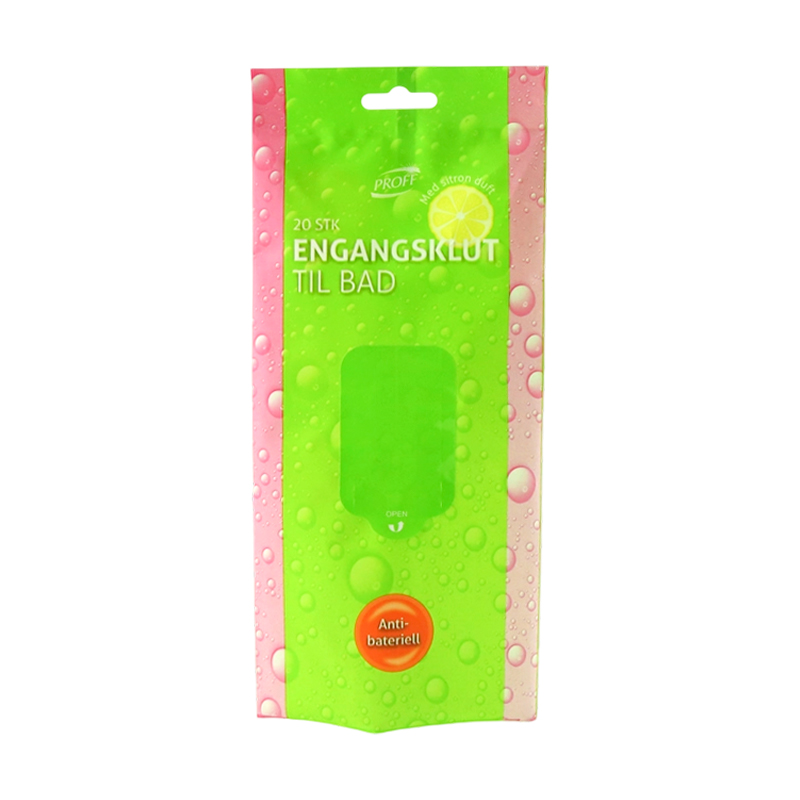2025-07-24
In the rapidly growing wet wipes market, packaging plays a critical role in preserving product quality and enhancing user experience. One of the innovative solutions making waves in the industry is the wet wipes composite packaging bag. Engineered to combine durability, leak-proof performance, and moisture retention, these bags have become essential for manufacturers seeking to deliver fresh, hygienic wipes to consumers. Central to their success is the adoption of advanced triple-layer composite structures that significantly elevate packaging performance.
The Growing Demand for High-Performance Wet Wipe Packaging
Wet wipes are widely used across various sectors, including personal care, healthcare, household cleaning, and hospitality. Consumers expect their wipes to remain moist, effective, and free from contamination from the moment they open the package to the last wipe used. This demand has driven the development of composite packaging bags specifically designed to meet these stringent requirements.
Traditional packaging materials often fall short when it comes to preventing moisture loss and protecting against external factors such as oxygen and bacteria. The result can be dry or contaminated wipes, to customer dissatisfaction and brand damage. Composite packaging bags, especially those with multilayer constructions, offer a powerful solution to these challenges.
Understanding Triple-Layer Composite Structure
At the heart of modern wet wipes composite packaging bags lies the triple-layer composite structure. This design integrates three distinct layers, each serving a unique purpose to optimize the overall performance of the packaging:
Outer Layer: The outerlayer is usually composed of polyester (PET) or polypropylene (PP), providing mechanical strength, tear resistance, and an surface for high-quality printing. This layer protects the bag during handling and shipping while allowing brands to showcase attractive designs and product information.

Middle Barrier Layer: The crucial middle layer functions as a barrier against moisture, oxygen, and external contaminants. Materials like aluminum foil or ethylene vinyl alcohol (EVOH) are commonly used here due to their barrier properties. This layer prevents evaporation of the wetting solution inside the wipes and shields the contents from environmental elements that could degrade quality.
Inner Sealant Layer: The innerlayer typically consists of polyethylene (PE) or similar sealant materials that enable the bag to be heat-sealed securely. This layer ensures a tight closure, making the packaging leak-proof and airtight, which is vital for maintaining moisture and hygiene.
Advantages of Triple-Layer Composite Packaging Bags
The integration of these three layers results in a packaging solution that excels in several key areas:
Moisture Retention: The barrier layer significantly reduces moisture loss, keeping wipes fresh and ready for use over extended periods.
Leak-Proof Performance: The secure sealant layer combined with precise sealing techniques guarantees a leak-proof package, eliminating messy spills and waste.
Enhanced Durability: The outer protective layer protects against physical damage, helping the package withstand transportation stresses and handling by end users.
Hygienic Protection: By preventing external contaminants from entering, the packaging helps maintain the wipes’ cleanliness and safety.
Branding and Customization: The outer layer’s printable surface allows manufacturers to incorporate vibrant graphics, regulatory information, and usage instructions, enhancing brand visibility and consumer trust.
Applications and Market Trends
Triple-layer composite packaging bags are becoming the choice for many wet wipes manufacturers across different industries. Baby wipes, personal hygiene wipes, disinfectant wipes, and makeup removal wipes all benefit from this packaging solution. Its versatility supports various pack sizes and dispensing formats, including resealable closures, zipper systems, or easy-peel labels.
Sustainability is also shaping industry trends. Manufacturers are exploring eco-friendly alternatives such as recyclable composite films or incorporating recycled content without compromising the essential barrier and sealing properties. Innovations in biodegradable coatings and films are under development, aiming to reduce environmental impact while maintaining product integrity.
Technological Innovations Boosting Packaging Performance
Advancements in film extrusion, lamination, and sealing technologies have allowed manufacturers to produce composite bags with consistency and performance. Ultrasonic sealing and advanced heat-sealing techniques enhance the strength and uniformity of seals, reducing defects and leaks.